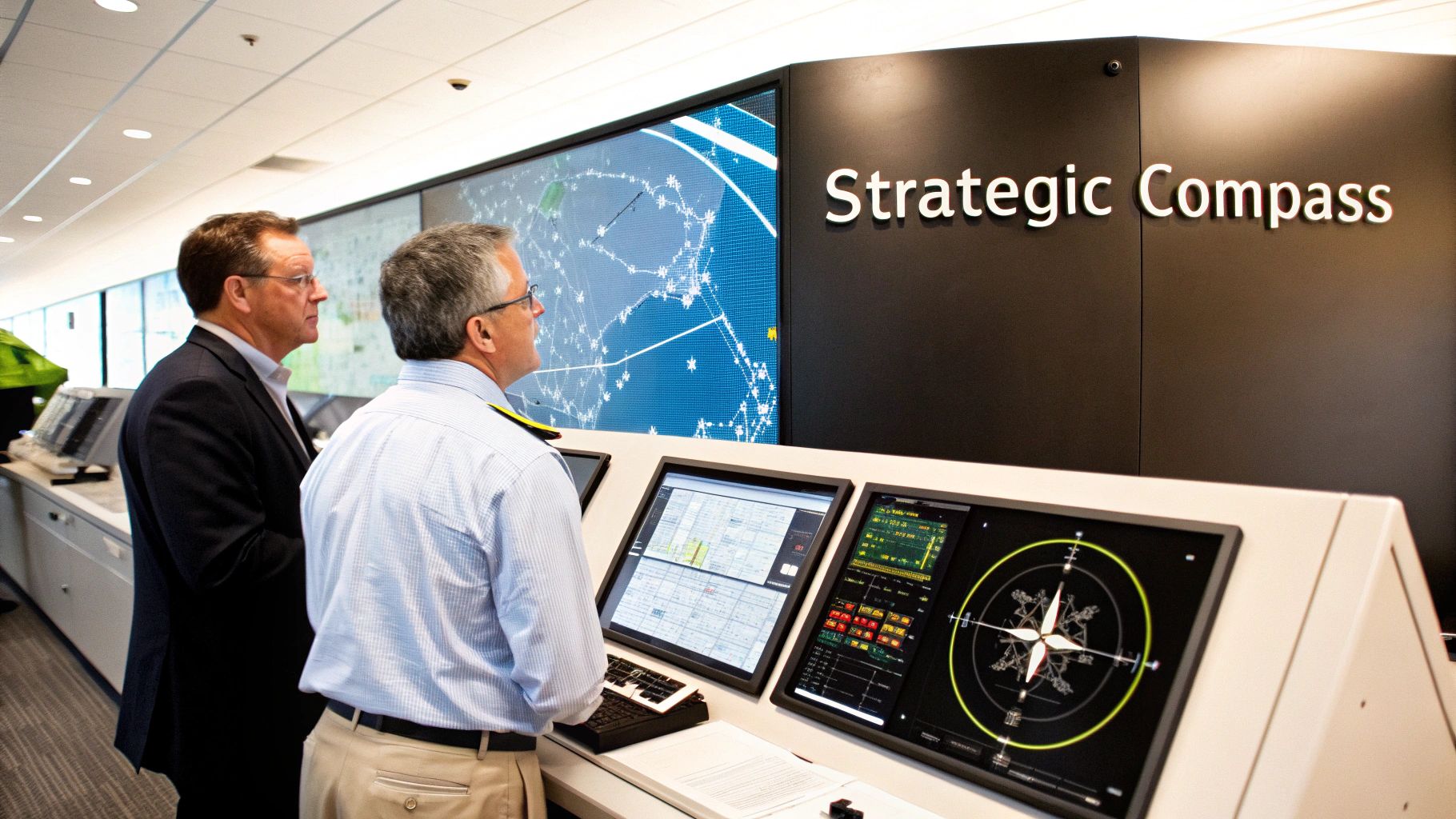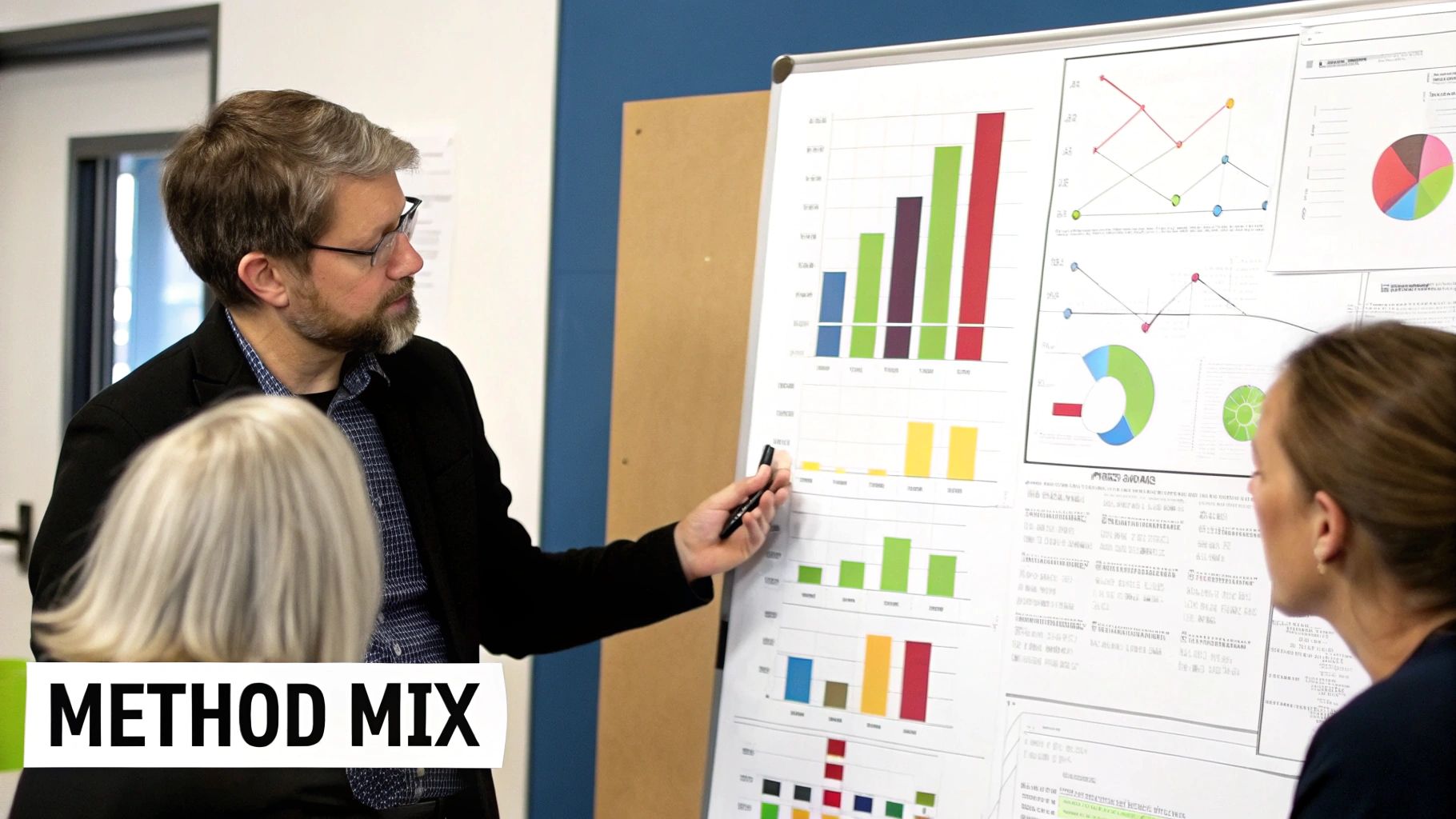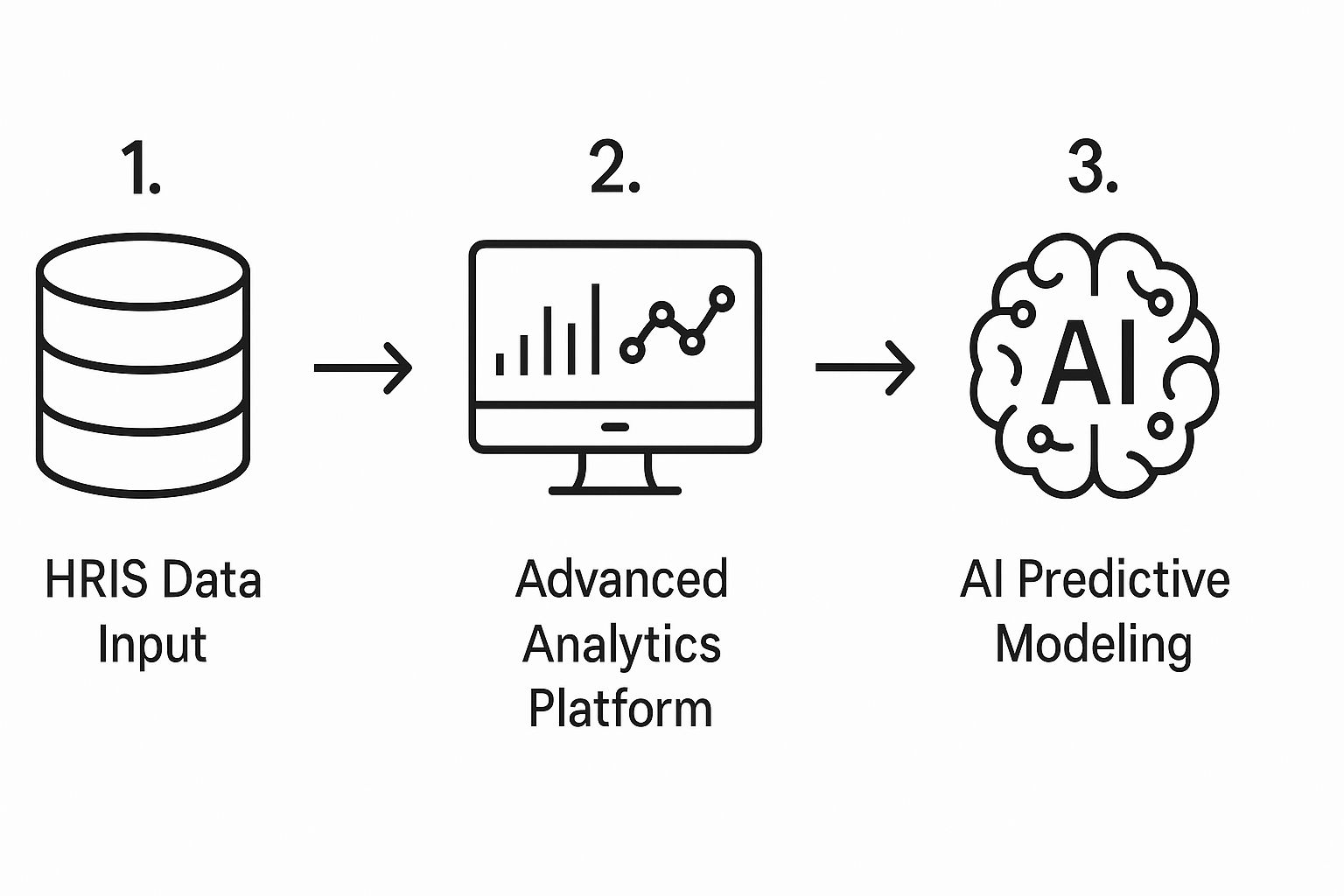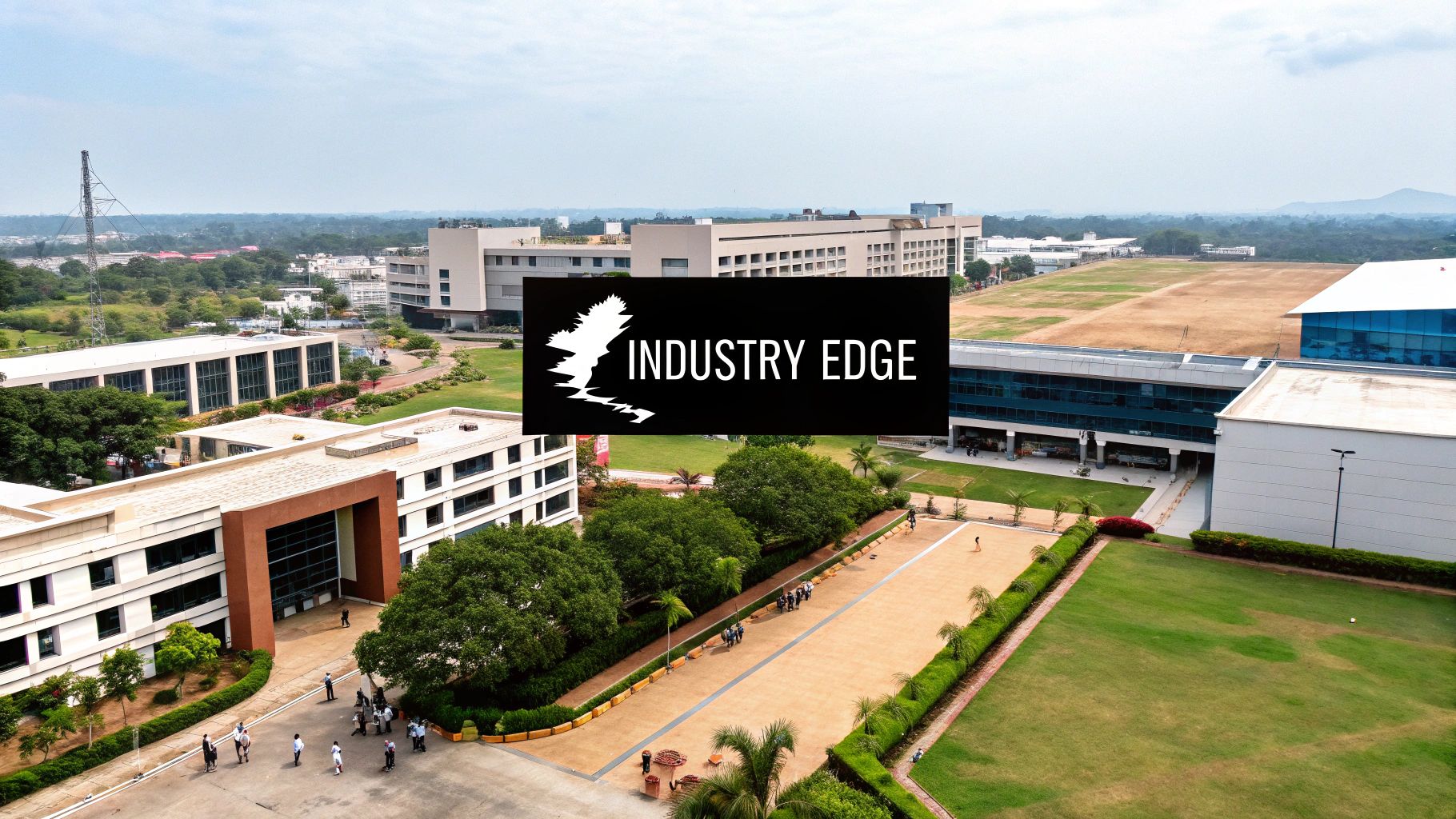Step 1: Pinpoint Your Strategic Business Goals
Before you even think about crunching numbers, you need to know which way the business is sailing. Your workforce forecast is only as good as its connection to core organisational goals. Are you planning to expand into new markets? Launch a groundbreaking product line? Or perhaps drive a company-wide digital overhaul?
You have to ask the tough questions: What are our revenue targets over the next three years? Which new technologies are going to shake up our operations? What does our growth roadmap look like? The answers to these questions are the bedrock of your entire forecast. Without this strategic alignment, you risk your efforts becoming a purely academic exercise with little real-world impact.
Step 2: Get a Handle on Your Current Workforce
With your goals set, it’s time to take a detailed snapshot of the team you have right now. This is much more than a simple headcount. You need to build a comprehensive skills inventory—a catalogue of the competencies, qualifications, and untapped potential of your people.
Your analysis should uncover:
- Key Roles and Talent Hotspots: Who are the high-flyers and subject matter experts you can’t afford to lose?
- Existing Skill Gaps: Where are the capabilities missing that you’ll need for your future goals?
- Attrition Risks: Are there specific departments or roles with a revolving door that you need to account for?
Think of this internal audit as establishing your baseline. It shows you what you’re working with before you can figure out what you’ll need down the line.
Step 3: Forecast Your Future Talent Demand
Now for the forward-looking part. This is where you blend your strategic goals with historical data and market trends to predict what you’ll need in the future. You’re essentially forecasting the demand for talent. If the company aims to boost production by 20%, how many more operations managers does that translate to? If you’re launching a new AI-powered service, what specific data science skills will suddenly become non-negotiable?
The best approach is to use a mix of quantitative methods, like trend analysis, alongside qualitative insights gathered straight from department leaders. This step is all about translating those big-picture business objectives into tangible headcount and skill requirements.
By forecasting demand, you shift from being reactive—scrambling to fill roles as they open up—to proactively building the exact workforce needed to drive future business strategy. That proactive stance is a massive competitive advantage.
Step 4: Identify and Bridge the Talent Gaps
The final piece of the puzzle is comparing your future demand forecast with your current workforce analysis. That space between what you have and what you need? That’s your talent gap. This gap analysis is the most crucial output of the entire process because it directly informs your plan of attack.
Once you’ve identified the gaps, you can get to work developing targeted strategies to close them. Your action plan might include a mix of tactics:
- Targeted Recruiting: Sourcing external candidates who already have the specific skills you’re missing.
- Internal Mobility Programmes: Promoting and moving talented employees into new roles where they can grow.
- Strategic Reskilling Initiatives: Training current team members to get them ready for the responsibilities of tomorrow.
This strategic plan ensures you’re not just hiring people, but methodically building the precise workforce your organisation needs to win.
 />
/>









